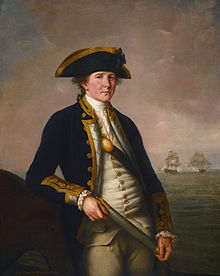Sir Charles Pole | |
|---|---|
 Charles Morice Pole (John Francis Rigaud, 1781) | |
| Governor of the Bank of England | |
| In office 1820–1822 | |
| Preceded by | George Dorrien |
| Succeeded by | John Bowden |
| Personal details | |
| Born | 18 January 1757 |
| Died | 6 September 1830 (aged 73) Aldenham Abbey, Hertfordshire |
| Occupation |
|
| Military service | |
| Allegiance | |
| Branch/service | |
| Years of service | 1770–1806 |
| Rank | Admiral of the Fleet |
| Commands | HMS Cormorant HMS Britannia HMS Hussar HMS Success HMS Crown HMS Melampus HMS Illustrious HMS Colossus Baltic Fleet |
| Battles/wars | American Revolutionary War French Revolutionary Wars Napoleonic Wars |
| Awards | Knight Grand Cross of the Order of the Bath |
Admiral of the Fleet Sir Charles Morice Pole, 1st Baronet GCB (18 January 1757 – 6 September 1830) was a Royal Navy officer, colonial administrator and politician. As a junior officer he saw action at the siege of Pondicherry in India during the American Revolutionary War. After taking command of the fifth-rate HMS Success he captured and then destroyed the Spanish frigate Santa Catalina in the Strait of Gibraltar in the action of 16 March 1782 later in that War.
After capturing the French privateer Vanneau in June 1793, Pole took part in the siege of Toulon at an early stage of the French Revolutionary Wars. He went on to be governor and commander-in-chief of Newfoundland and then commanded the Baltic Fleet later in the War. He also served as a Lord Commissioner of the Admiralty on the Admiralty Board led by Viscount Howick during the Napoleonic Wars. From 1820 to 1822, he served as Governor of the Bank of England.